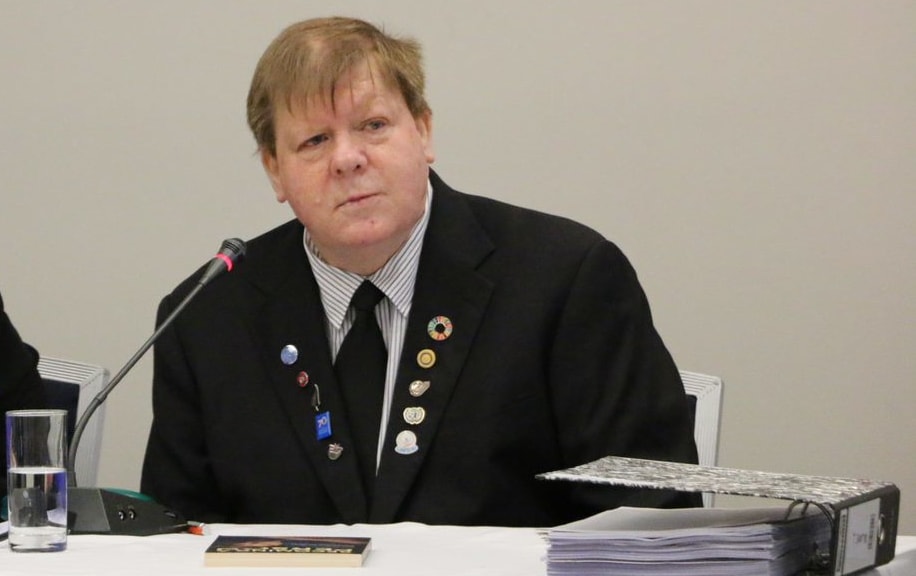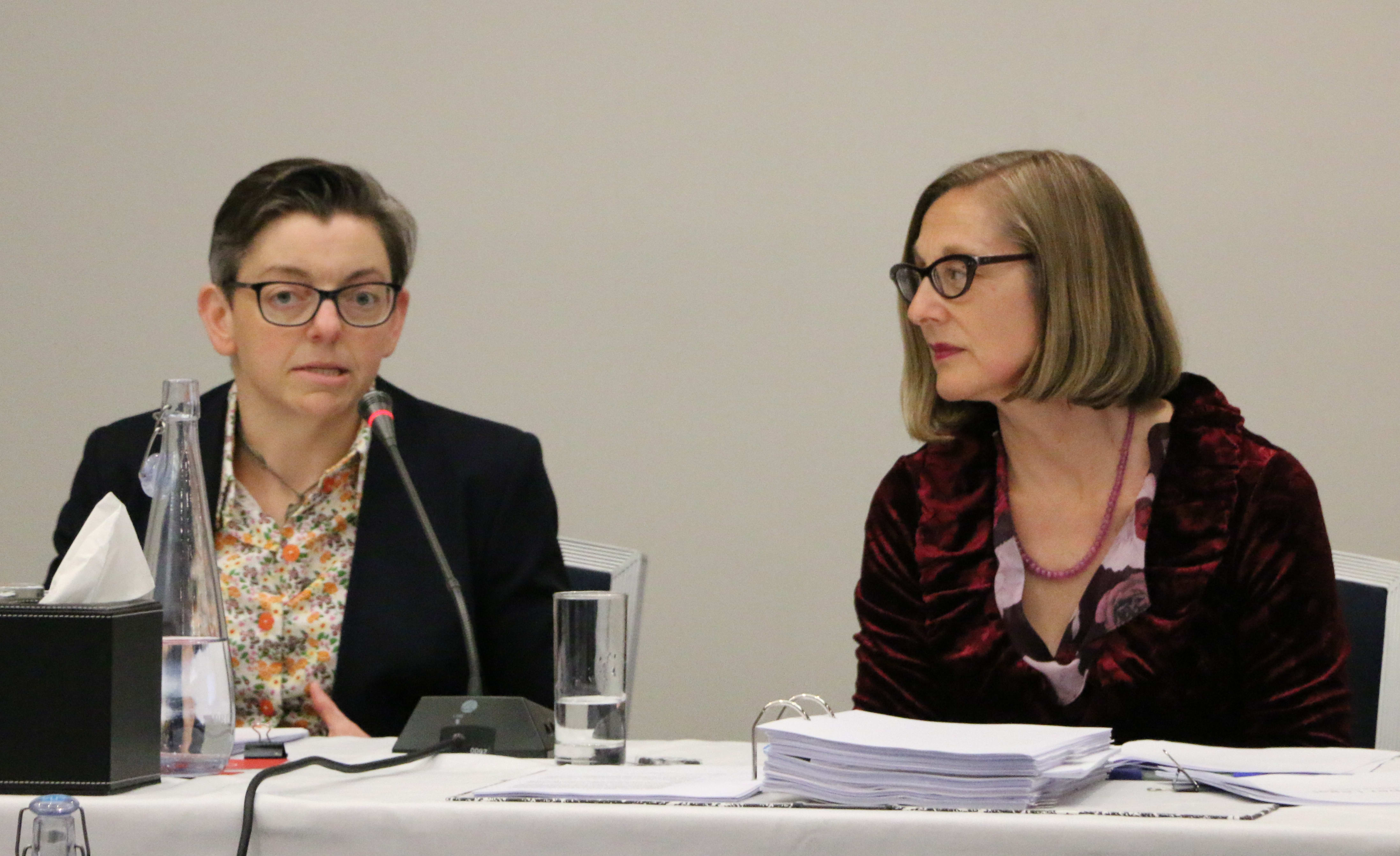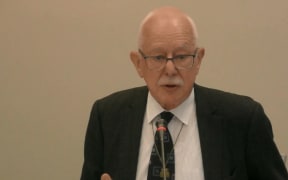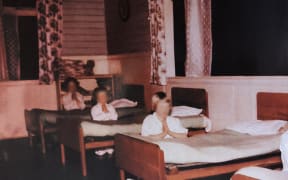By David Cohen*
Analysis - When Robert Martin first saw media footage of scores of thousands of fellow New Zealanders surging into the streets in 1981 to protest against that year's Springboks tour, he felt a bit confused.

Robert Martin is the first person with a learning disability to be elected to a UN Committee for the Rights of Persons with Disabilities. Photo: RNZ / Katie Scotcher
Mr Martin, a disability rights activist who spent most of his early years living as a ward of the state, could not understand why the abuse he had experienced and witnessed did not rate as great a cultural mention as the political injustices of South Africa.
This was something he felt particularly keenly about in respect of what he saw at places such as Kimberly, Campbell Park School and, especially, Lake Alice, a notorious psychiatric facility that used to operate in the Manawatū.
"I often wondered," he recalled with a shrug during his testimony at the second full week of public hearings at the Abuse in Care Royal Commission in Auckland.
Mr Martin, who has since become the first person with a learning disability to be elected to aUN Committee for the Rights of Persons with Disabilities, need wonder no more.
Thanks to his sometimes halting testimony, and accounts shared by others, attention has now moved to a form of institutional abuse that deserves level-footing with the better-known media stories of sexual impropriety that have dominated much of the public discussion until now.
While stories of abuse in Lake Alice are already somewhat well known, this has been the first time attention has turned to those involving kids and teenagers.
Along with Mr Martin, the panel heard related accounts from the likes of Wellington lawyer Sonja Cooper, Oliver Sutherland and onetime inmate Beverly Wardle-Jackson.
Dr Sutherland was a member of the Nelson Māori Committee and the Auckland Committee on Race and Discrimination in the 1970s and 1980s. He said a separate inquiry could yet be in order based on the "terrible, terrible" treatment of children at Lake Alice.
Ms Wardle-Jackson, like other youngsters of the time, ricocheted between standard family homes, institutions like Miramar Girls' Home and psychiatric hospital care. Her experience of the latter began at the age of 14.
Ms Cooper's law firm in Wellington has hundreds of claims relating to one or another of the same places. Lake Alice, which operated for nearly a half-century in the Manawatū, figures prominently among her 1400 open files.

Amanda Hill and Sonja Cooper from Cooper Legal. Photo: RNZ / Katie Scotcher
Each of these accounts underscored how the national experiment in residential children's care dovetailed with an era in which pop therapies were all the official rage.
Reality therapy, for example, was one such popular technique - a sort of tough-love style in which administrators were advised to show no sympathy for wards "because sympathy emphasises their unworthiness and depresses them even more".
At Lake Alice this was given a darker twist by the use of electroconvulsive therapy, or ECT, as a way of supposedly putting wayward young patients back on the straight and narrow.
ECT had a fad-like appeal at the time. It was a treatment first introduced in the late 1930s as a last-ditch method of helping severely depressed adults by way of inducing a seizure. Never, though, was it intended to be used on anyone other than consenting adults and even then only under a general anesthetic.
Nevertheless it was used as many as three times a week on teenagers at Lake Alice.
According to those who underwent it, the procedure was typically administered after the boy or girl was first given a biscuit and a cup of tea mixed with a drug to stop drooling. It involved strapping electrodes on their head with bandages that had been dipped in salt water in order to avoid leaving burn marks.
The controversial Selwyn Leeks oversaw the facility's adolescent unit where these sessions took place. Typically they were administered without anesthetic or without niceties. Although those who experienced them say Dr Leeks made a point of explaining that what was happening was intended as a punishment.
Ms Cooper told the commission that ECT was used as a punishment, and this also included patients being placed in the room to watch ECT being administered to frighten them into submission.
Yet on a purely medical level, the institution could hardly have been unaware of the poor academic notices the treatment was already receiving. Writing as early as 1942, the psychiatrist Roy Grinker warned of profound emotional and intellectual changes in patients, whose post-shock state he likened to punch-drunk boxers.
In 1958, the Boston psychiatrist Max Fink sounded another note of international alarm, warning that ECT "seems to knock out the brain and reduce the higher activities, to impair memory and thus the newer acquisition of the mind, namely the pathological state, is forgotten".
Never would either of these specialists have foreseen a situation in which such a procedure would be used without sedatives on unwilling young people who would lose what remained of their childhood, if not their minds, as a result.
And never, presumably, did the government of New Zealand ever think it would end up paying millions of dollars, as it did in 2001, to 200 former inmates who underwent the procedure. More could yet be in store when the current inquiry concludes.
* David Cohen is a Wellington journalist and the author of Little Criminals: The Story of a New Zealand Boys' Home. He is supplying regular analyses on the royal commission for RNZ.





